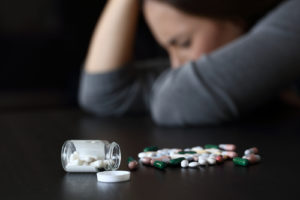Although prescription opioids have helped countless people function with moderate or severe pain every day, millions of Americans struggle with addiction to opioid drugs that began when they started using prescription pain medications.
The Opioid Abuse Epidemic
Drug overdoses involving prescription narcotics have been on the rise since 1999, just a few years after prescribing regulations loosened as pharmaceutical companies created new versions of opioid drugs. From the early 2000s to about 2010, doctors and lawmakers watched people struggle with opioid addiction and increasing rates of overdoses and deaths. They began tightening laws and prescribing practices around opioid drugs again, leading to a spike in heroin abuse, as people turned to an illicit drug that is less expensive than prescription narcotics and easier to find.
The U.S. Centers for Disease Control and Prevention (CDC) reports that, between 1999 and 2017, more than 700,000 people died from drug overdoses, and 68 percent of those deaths involved opioids (either prescription or illegal opioids). By 2017, despite the attempts to curb prescribing practices and access to narcotic painkillers like oxycodone and hydrocodone, the rate of overdose deaths was six times higher than in 1999. More people abuse heroin, and with the increase of deadly, potent fentanyl mixed into or sold in place of heroin, more people are rapidly dying from overdoses because they do not know what type of narcotic they’re taking.
As of 2017, an estimated 130 people die every day from opioid overdoses in the United States. Prescription opioid use is, according to the National Institute on Drug Abuse (NIDA), the biggest risk factor for heroin abuse.
Pharmacies dispense prescription opioids with a legitimate prescription from a doctor or dentist. People often receive short-term prescriptions for opioid pain relievers:
- After dental procedures
- After surgeries
- After an injury that takes time to heal
- For chronic conditions such as multiple sclerosis or cancer
- To treat coughs (codeine syrups)
Types of Prescription Opioid Drugs You May Encounter Include:
- Morphine
- Codeine
- Hydrocodone
- Oxycodone
- Oxymorphone
- Hydromorphone
- Methadone
- Tramadol
- Prescription fentanyl
There Also Are Illicit Versions of Nearly All These Drugs:
- Opium
- Heroin
- Illicit fentanyl
- Opioids mimicking prescription narcotics
People who struggle with opioid addiction may appear normal most of the time, but they may also fixate on acquiring and taking opioid drugs. In the worst-case scenarios, they may have lost relationships with friends and family, their home, their job, and other forms of support. They may be in jail because of substance abuse.
If Someone Struggles With Opioid Addiction, They May Show Signs Such As:
- Stumbling, losing their balance, or slurring their words
- Breathing problems
- Appearing heavily sedated
- Seeming very tired or drowsy
- Nausea and vomiting
- Constipation or other intestinal issues
- Mood swings
- Changes to sleeping and eating patterns
- Lowered motivation for activities they previously loved
- Irritability, restlessness, anxiety, or depression
Although opioids are a central nervous system (CNS) depressant, they release dopamine and serotonin, which elevates mood and triggers the brain’s reward system. This means that people who take opioids, either as prescribed or for recreational reasons, may experience a high that feels good and makes them happy.
People who struggle with depression are at risk of abusing many types of drugs, including opioids, because intoxicating substances release these neurotransmitters to make them feel better. At the same time, people who abuse opioids are more likely to develop depression as a long-term problem from substance abuse.

What Is Depression?
Depression is most notorious as either a major depressive disorder or clinical depression, which is a condition that lasts for about two weeks and involves severe symptoms that interfere with one’s ability to enjoy life. Symptoms usually include a few of the following:
- Feeling sad or low
- Feeling guilty
- Feeling anxious about negative consequences
- Anhedonia, or feeling no pleasure or overall emptiness
- Irritability, restlessness, nervousness, or aggression
- Loss of interest in hobbies or other fun activities
- Changes to sleeping, from sleeping very little to sleeping too much
- Changes to eating habits, including eating too much or too little, leading to weight changes
- Low physical energy or consistent fatigue
- Physical pain, including headaches, backaches, neck pain, or other problems with no underlying physical cause
- Low motivation
- Trouble moving, speaking, or getting out of bed
- Thoughts of or attempts at suicide

There are other types of depression, including psychotic depression, hormone-related depression like premenstrual dysphoric disorder (PMDD) and perinatal depression, or seasonal affective disorder. When most people are diagnosed with depression or begin treatment for depression, they have either major depression or persistent depressive disorder (dysthymia), which involves low-level but constant feelings listed above, lasting for two years or more.
Depression is closely tied to substance abuse, especially abuse of CNS depressants like alcohol, opioids, and sedatives. People who develop depression first may self-medicate with available drugs, suffer intense pain they cannot explain, or steal drugs from friends and family. Similarly, people who abuse many substances, especially CNS depressants, are more likely to develop depression after abusing a lot of these drugs for years.
When opioid abuse and depression are correlated, there can be various causes.
Depression and chronic pain:
Physical pain is a common symptom associated with depression. Stress from feeling negative can lead to muscle aches, joint pain, and headaches. People who do not know they have depression may see a doctor due to these unexplained pains, which may mean that they receive a prescription for opioid painkillers. Additionally, people who struggle with chronic pain are more likely to suffer from depression because they have a reduced quality of life.
It is important to know that opioid use can, paradoxically, increase the body and brain’s sensitivity to pain, so prescribing these medications to treat chronic pain can be risky. Abusing opioids or being too intoxicated from a prescribed dose of painkillers increases the risk of falling or accidents that amplify the risk of future chronic pain.
Depression as a trigger for opioid abuse:
Studies have found that people with depression initiate opioid abuse slightly more often than people who do not have depression, and they are twice as likely to transition to long-term abuse. People who struggle with depression tend to continue taking opioids, or feel like they need opioids when discussing prescriptions, at lower levels of reported pain and at higher physical functioning. Some researchers have found that people with depression use opioids not just to manage physical pain, but also to treat insomnia, which can be exacerbated by physical discomfort and high stress, which contributes to increased pain sensations.
Opioid use that triggers depression:
While most of the research on opioid use, misuse, and abuse suggests that the relationship between depressive symptoms and this sedative medication is bidirectional, one study found that simply taking opioids could increase the experience of depressive symptoms. Of 100,000 patients surveyed, about 10 percent developed depression after receiving prescription painkillers; the group had not received mental health diagnoses before treatment. Another study found that taking 50 morphine milligram equivalents (MMEs) per day to treat pain was associated with a threefold increase in depressive symptoms compared to people who did not take opioids to treat chronic pain.
People who struggle with addiction to the point that they switch to heroin may suffer culture-related guilt, sadness, hopelessness, and despair because heroin abuse is perceived as such a personal failure in the U.S. About 48 percent of people who abuse heroin are likely to develop depression, according to studies. People who struggle with heroin addiction are also at an increased risk of suicide, with rates of attempts and completion reaching 35 percent among those struggling with heroin.
Reduced effectiveness when combining opioids and antidepressants:
People who take antidepressants to manage depression may find that their psychiatric medication works poorly if they need to take opioids for any reason. A study found that severely depressed individuals needed some additional intervention to treat their depression, including stronger antidepressants or electroconvulsive therapy, within 30 days of beginning opioid painkiller treatment. In another study, reducing the dose of opioids led to improvements in depression symptoms.
Taking Opioids as Prescribed Reduces Risks
If you receive a prescription for opioid painkillers, it is important to follow your doctor’s prescribing recommendations. Monitor your levels of pain, and report if you think you need opioids. Use additional types of treatment, such as physical therapy, gentle exercise, mindfulness, and over-the-counter pain treatments, especially if you take opioids after having surgery or sustaining a serious injury. Opioid painkillers are important tools your doctor may use to treat you, but you can reduce the risk by asking questions and following all parts of your treatment plan.
If you struggle with opioid addiction, medical detox followed by behavioral treatment can help you overcome addiction.

